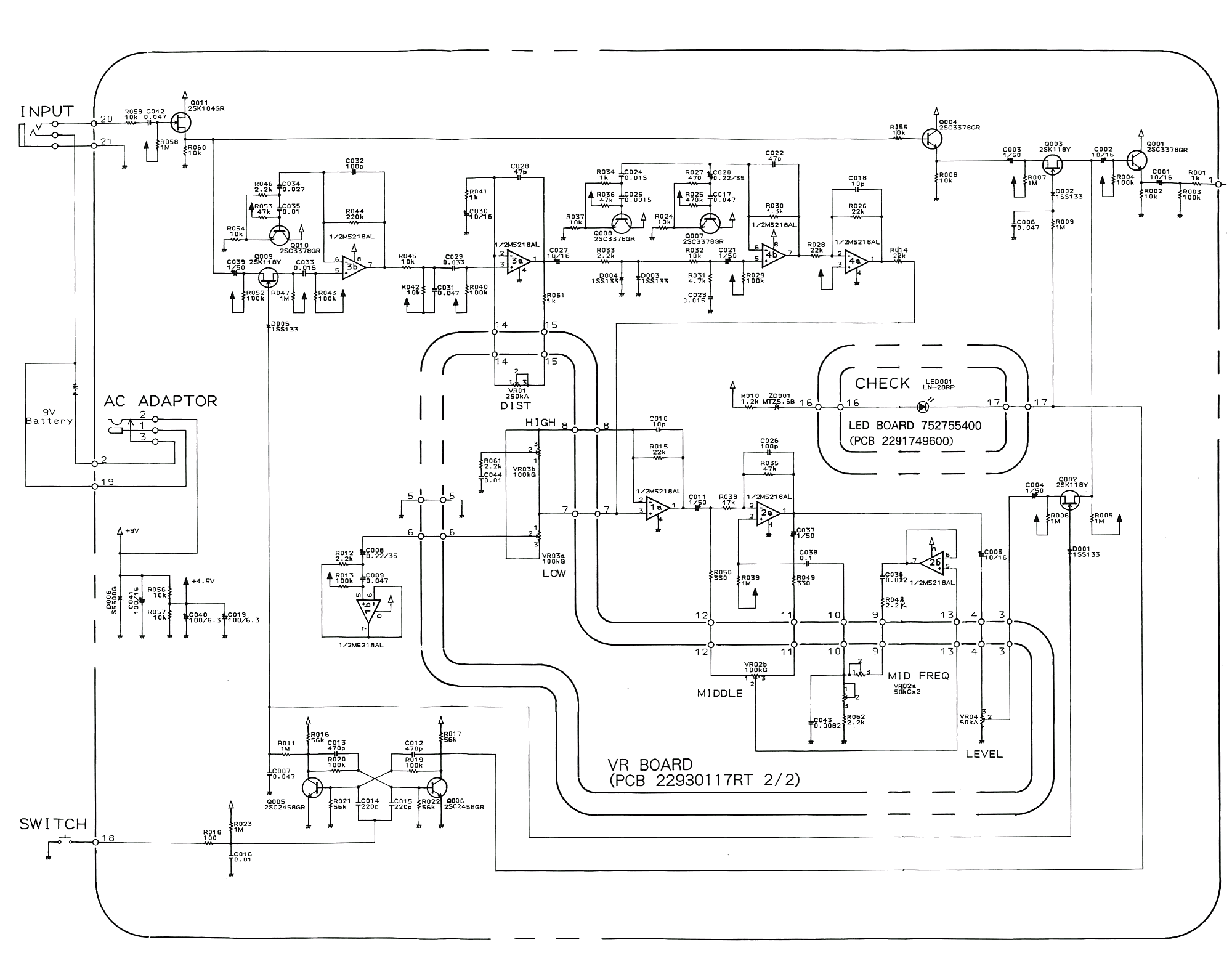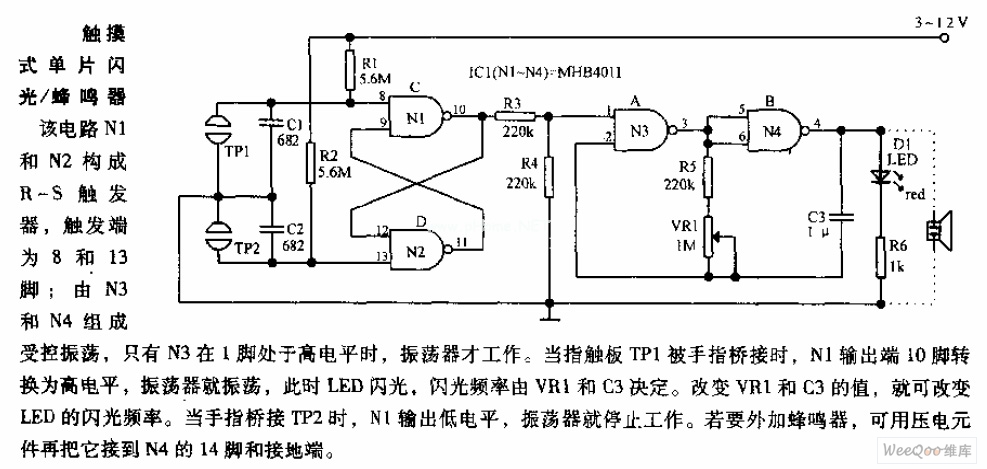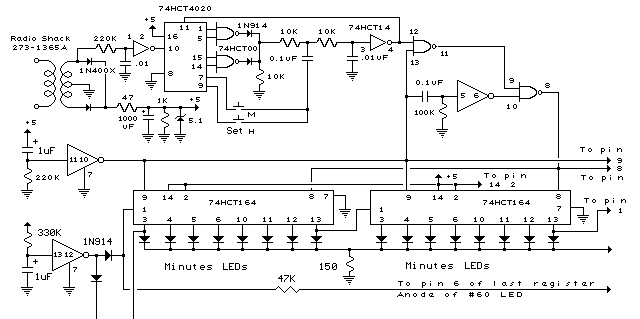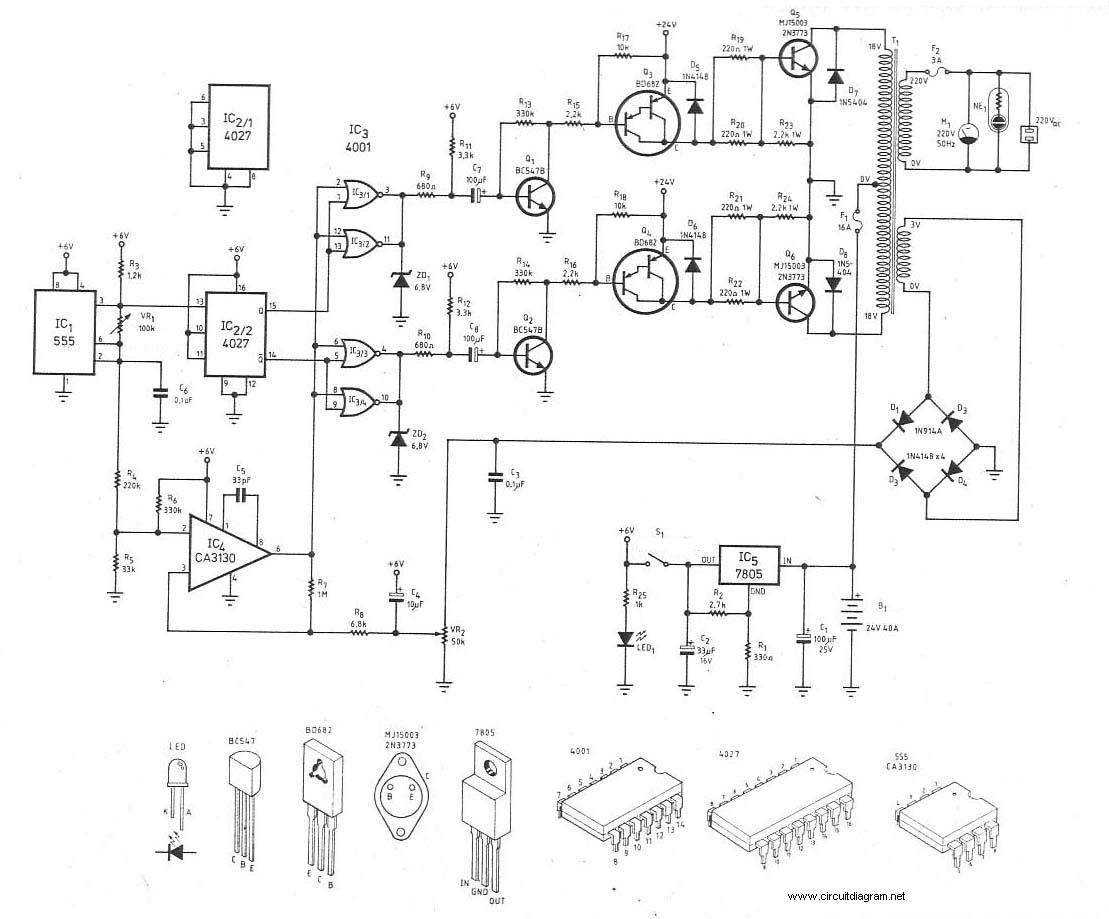
Boss MT-2 Metal Zone distortion pedal schematic diagram

The MT-2 Metal Zone™ is one of the most popular guitar pedals, delivering intense distortion tones characterized by pronounced mids and lows, along with an ultra-saturated sound. It features a distinctive dual-gain circuitry that enables long sustain and emphasizes heavy mids and lows, akin to a stack of overdriven amplifiers. Additionally, the 3-band equalizer with semi-parametric mid control provides a wide array of extreme distortion textures.
The MT-2 Metal Zone™ is engineered to cater to guitarists seeking a high level of distortion without compromising tonal quality. The dual-gain circuitry consists of two gain stages that work in tandem to amplify the signal significantly. The first stage is responsible for initial distortion, while the second stage adds further saturation, resulting in a thick, rich sound profile that is ideal for heavy metal and hard rock genres.
The 3-band equalizer is a critical feature of the MT-2, allowing users to tailor their sound precisely. The low, mid, and high frequency bands can be adjusted independently, with the semi-parametric mid control enabling fine-tuning of the midrange frequencies. This flexibility allows for the enhancement or reduction of specific tonal characteristics, making it possible to achieve a wide variety of distortion textures, from sharp and cutting to smooth and creamy.
The pedal's robust construction ensures durability, making it suitable for both studio and live performance settings. Its intuitive layout allows for easy adjustments during use, and the LED indicator provides visual feedback on the pedal's status. Overall, the MT-2 Metal Zone™ is a versatile tool for guitarists looking to explore the extremes of distortion while maintaining control over their sound.The MT-2 Metal Zone ™ is one the most popular guitar pedals, providing over-the-top, insane distortion tones with huge mids and lows and an ultra-saturated sound. It has a unique dual-gain circuitry, providing long sustain and heavy mids and lows like a stack of overdriven amplifiers.
The 3-band equalizer with semi-parametric mid control offers a wide range of extreme distortion textures. 🔗 External reference
The MT-2 Metal Zone™ is engineered to cater to guitarists seeking a high level of distortion without compromising tonal quality. The dual-gain circuitry consists of two gain stages that work in tandem to amplify the signal significantly. The first stage is responsible for initial distortion, while the second stage adds further saturation, resulting in a thick, rich sound profile that is ideal for heavy metal and hard rock genres.
The 3-band equalizer is a critical feature of the MT-2, allowing users to tailor their sound precisely. The low, mid, and high frequency bands can be adjusted independently, with the semi-parametric mid control enabling fine-tuning of the midrange frequencies. This flexibility allows for the enhancement or reduction of specific tonal characteristics, making it possible to achieve a wide variety of distortion textures, from sharp and cutting to smooth and creamy.
The pedal's robust construction ensures durability, making it suitable for both studio and live performance settings. Its intuitive layout allows for easy adjustments during use, and the LED indicator provides visual feedback on the pedal's status. Overall, the MT-2 Metal Zone™ is a versatile tool for guitarists looking to explore the extremes of distortion while maintaining control over their sound.The MT-2 Metal Zone ™ is one the most popular guitar pedals, providing over-the-top, insane distortion tones with huge mids and lows and an ultra-saturated sound. It has a unique dual-gain circuitry, providing long sustain and heavy mids and lows like a stack of overdriven amplifiers.
The 3-band equalizer with semi-parametric mid control offers a wide range of extreme distortion textures. 🔗 External reference





